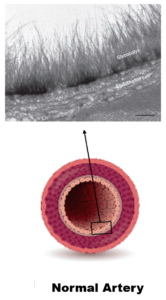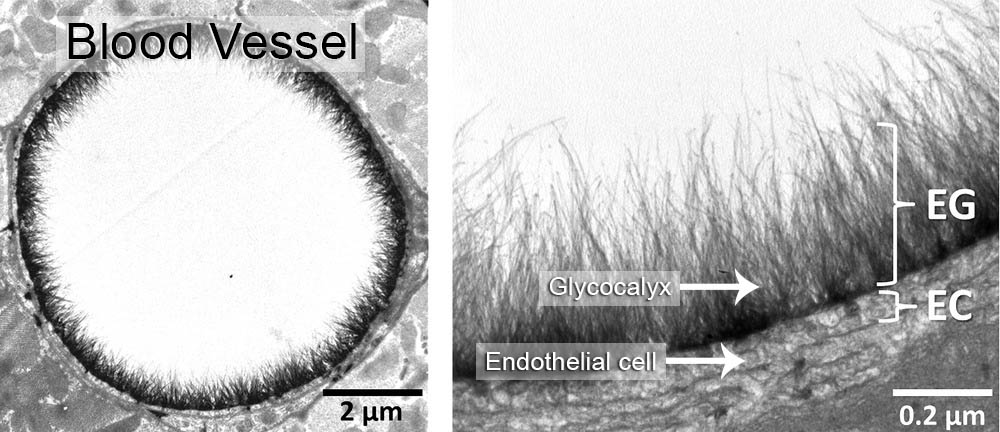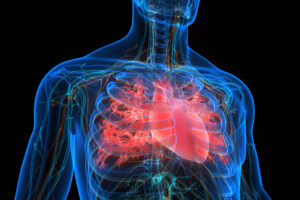 (image credit: van den Berg, Vink & Spaan, Circulation Research 2003, 92:592-594)
(image credit: van den Berg, Vink & Spaan, Circulation Research 2003, 92:592-594)
Glycocalyx is the gel-like lining of the capillaries and all other blood vessels. Its integrity is essential to the healthy function of all cells, organs and body systems. This lining protects the inside walls of the capillaries and enables the transfer of nutrients and waste removal from vital organs.
The gel-like substance that is glycocalyx is a free form matrix made up of starches, fluid, ions, and other stuff. An example of a free form matrix familiar to most people is gelatin desserts which are made of starch and pectin. Glycocalyx may act like glue between cells and as a sealant between the interior and exterior layers of blood vessels and capillaries. It protects surface cells and the lining of blood vessels and organs. The stickiness allows cellular interactions to take place between the white blood cells and protein receptors in cell membranes.
Over time, the glycocalyx wears down and develops gaps or holes inhibiting function. This happens because of aging, poor diet, lack of exercise, genetics, stress, smoking — and even conditions such as diabetes and high blood pressure. Nutrient delivery and waste removal falter. Organs suffer and starve.
Poor glycocalyx health can lead to these conditions:
- Heart Disease
- Kidney Disease
- Stroke
- Dementia
- Septic Shock
- Inflammatory Disorders
- Cancer
Maintaining a healthy diet and exercise can decrease the risk of poor glycocalyx health.










